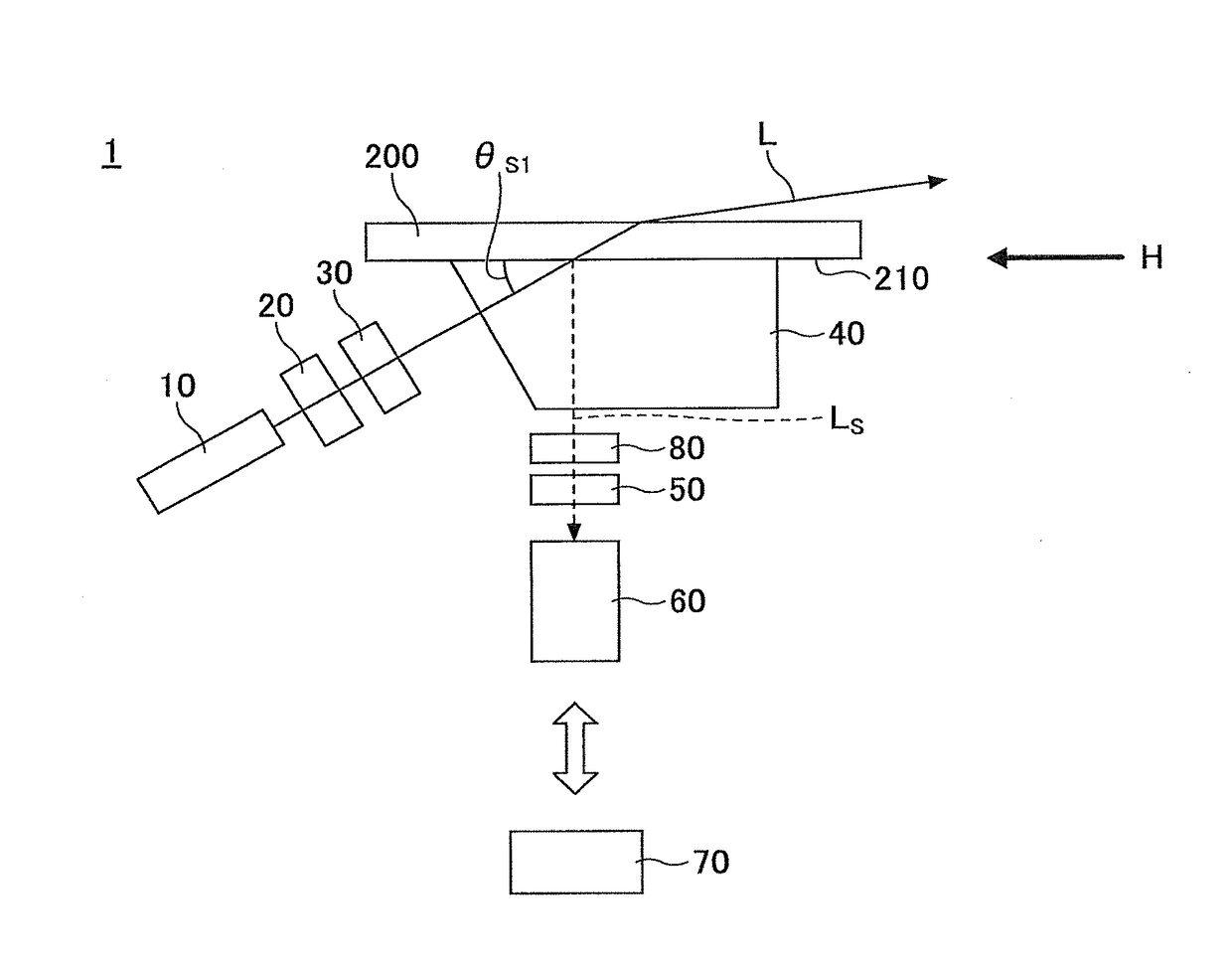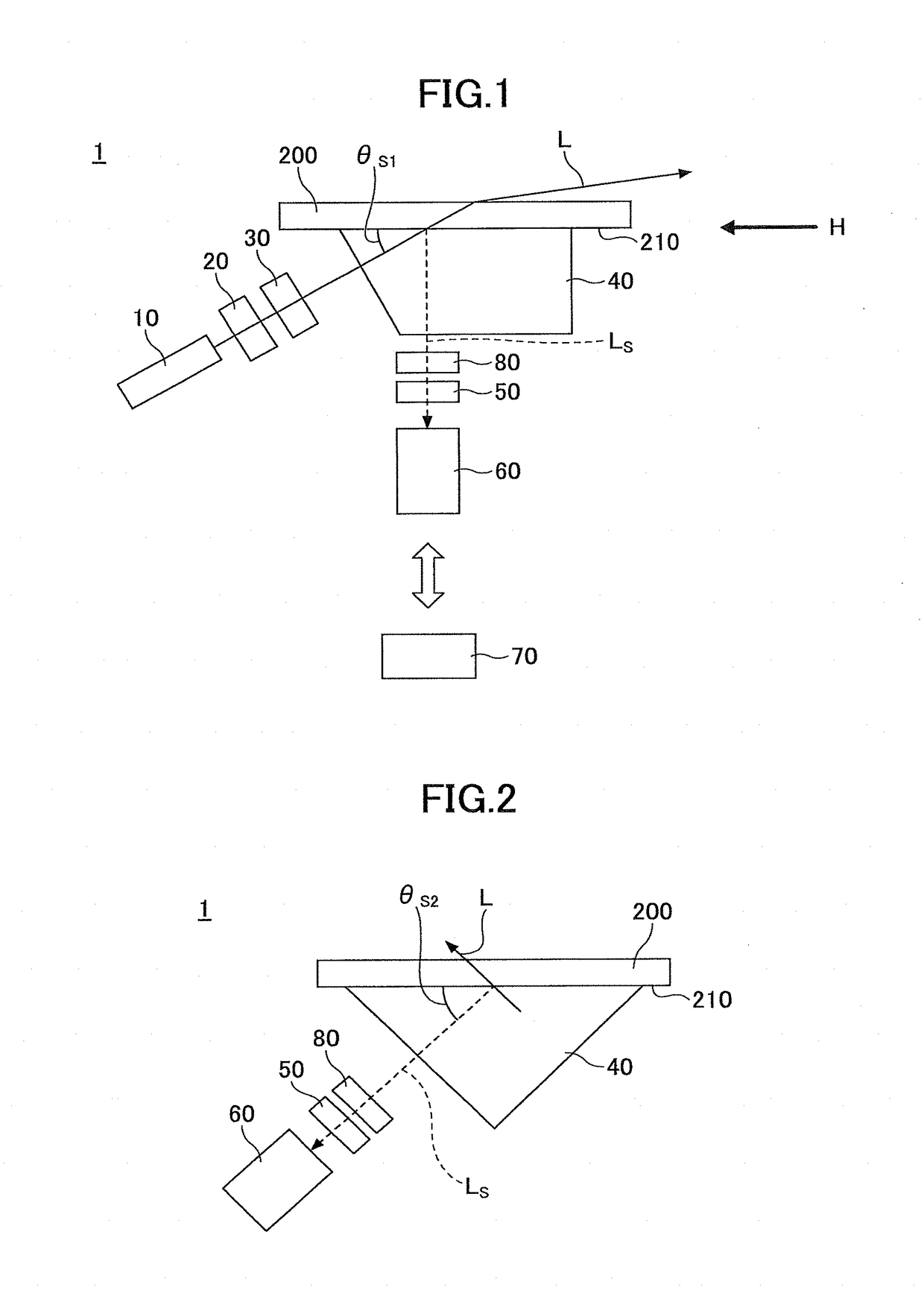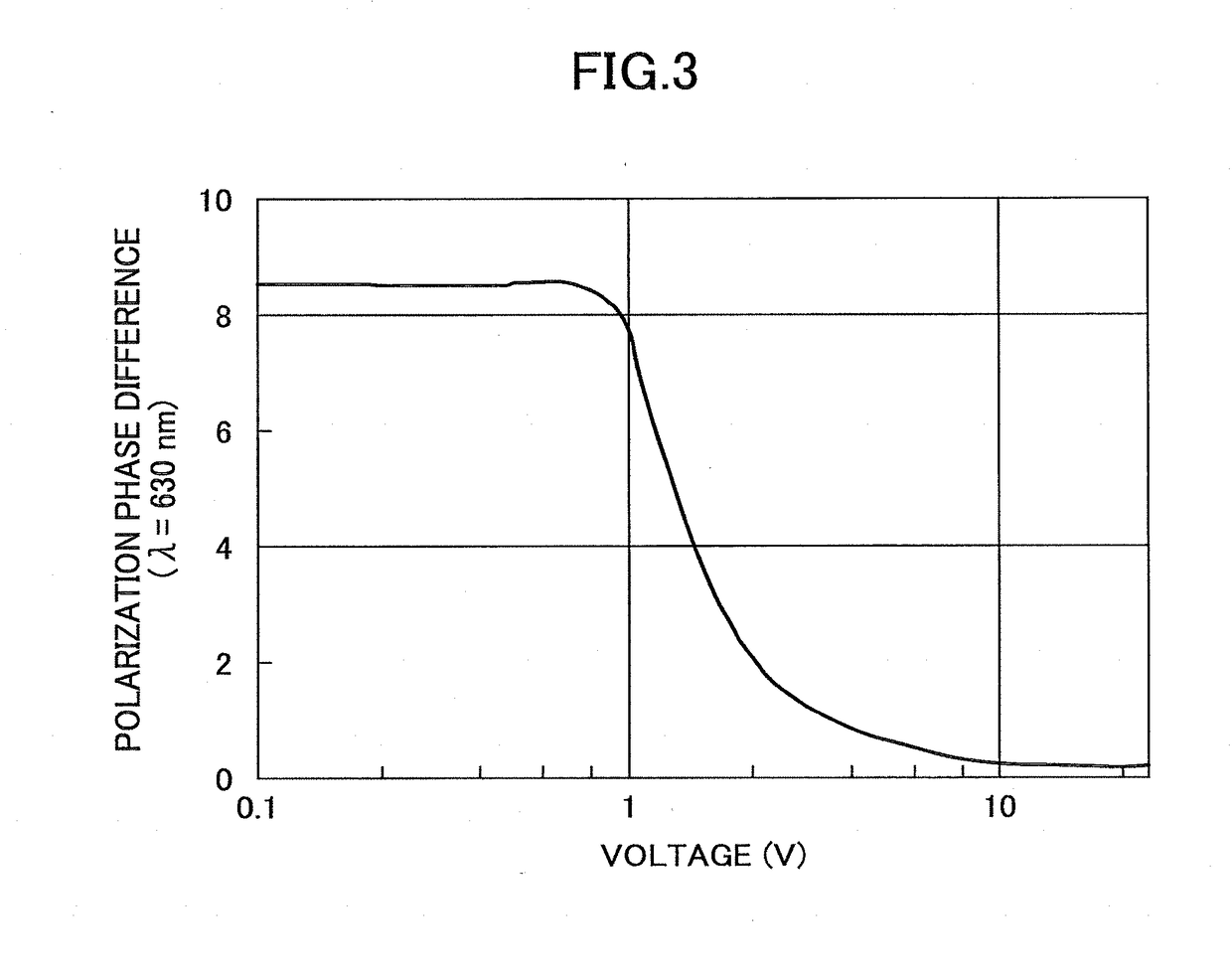Chemically strengthened glass
- Summary
- Abstract
- Description
- Claims
- Application Information
AI Technical Summary
Benefits of technology
Problems solved by technology
Method used
Image
Examples
examples
[0183]Examples corresponding to a chemically strengthened glass according to the embodiment will be described.
[0184]
[0185]Various evaluations for the examples were performed by an analysis method described as follows.
[0186](Evaluation of Glass: Surface Stress)
[0187]The stress distribution of the chemically strengthened glass of each example was calculated by the method described in the above embodiment. Specifically, the stress distribution was calculated by a method described in the above sections of .
[0188]Here, in the stress distribution, the depth of a compressive stress layer (DOL) is defined to be a minimum value of the glass depth (the unit is μm) at which the stress value becomes 0 MPa in the inside of the glass of the compressive stress layer of the chemically strengthened glass of the example, where σ(x) (MPa) represents a compressive stress at the depth x (μm) from the glass surface. Also, the internal energy density rE (kJ / m2) was calculated by using Expression (3).
[0189...
examples 1 to 20
[0191](First Chemical Strengthening Process)
[0192]Potassium nitrate (KNO3) and sodium nitrate (NaNO3) were put into a cup manufactured by SUS Corporation such that the total amount weighed 4000 g, and the concentration (mass %) of KNO3 became each value as shown under the column of the first chemical strengthening process in Table 2. Then, the cup was heated to reach a predetermined temperature by a mantle heater, to prepare a mixed molten salt of potassium nitrate and sodium nitrate. Meanwhile, a lithium-containing aluminosilicate glass having the size of 50 mm×50 mm, and the sheet thickness being one of the different values as listed in Table 2, was preheated to reach 350° C.; then, was immersed in the molten salt for a predetermined period of time to perform an ion-exchange process; and finally, cooled down to near room temperature, to perform the first chemical strengthening process. Conditions of the first chemical strengthening process were as listed in Table 2. The obtained c...
PUM
| Property | Measurement | Unit |
|---|---|---|
| Thickness | aaaaa | aaaaa |
| Depth | aaaaa | aaaaa |
| Compressive stress | aaaaa | aaaaa |
Abstract
Description
Claims
Application Information
 Login to View More
Login to View More - R&D
- Intellectual Property
- Life Sciences
- Materials
- Tech Scout
- Unparalleled Data Quality
- Higher Quality Content
- 60% Fewer Hallucinations
Browse by: Latest US Patents, China's latest patents, Technical Efficacy Thesaurus, Application Domain, Technology Topic, Popular Technical Reports.
© 2025 PatSnap. All rights reserved.Legal|Privacy policy|Modern Slavery Act Transparency Statement|Sitemap|About US| Contact US: help@patsnap.com



